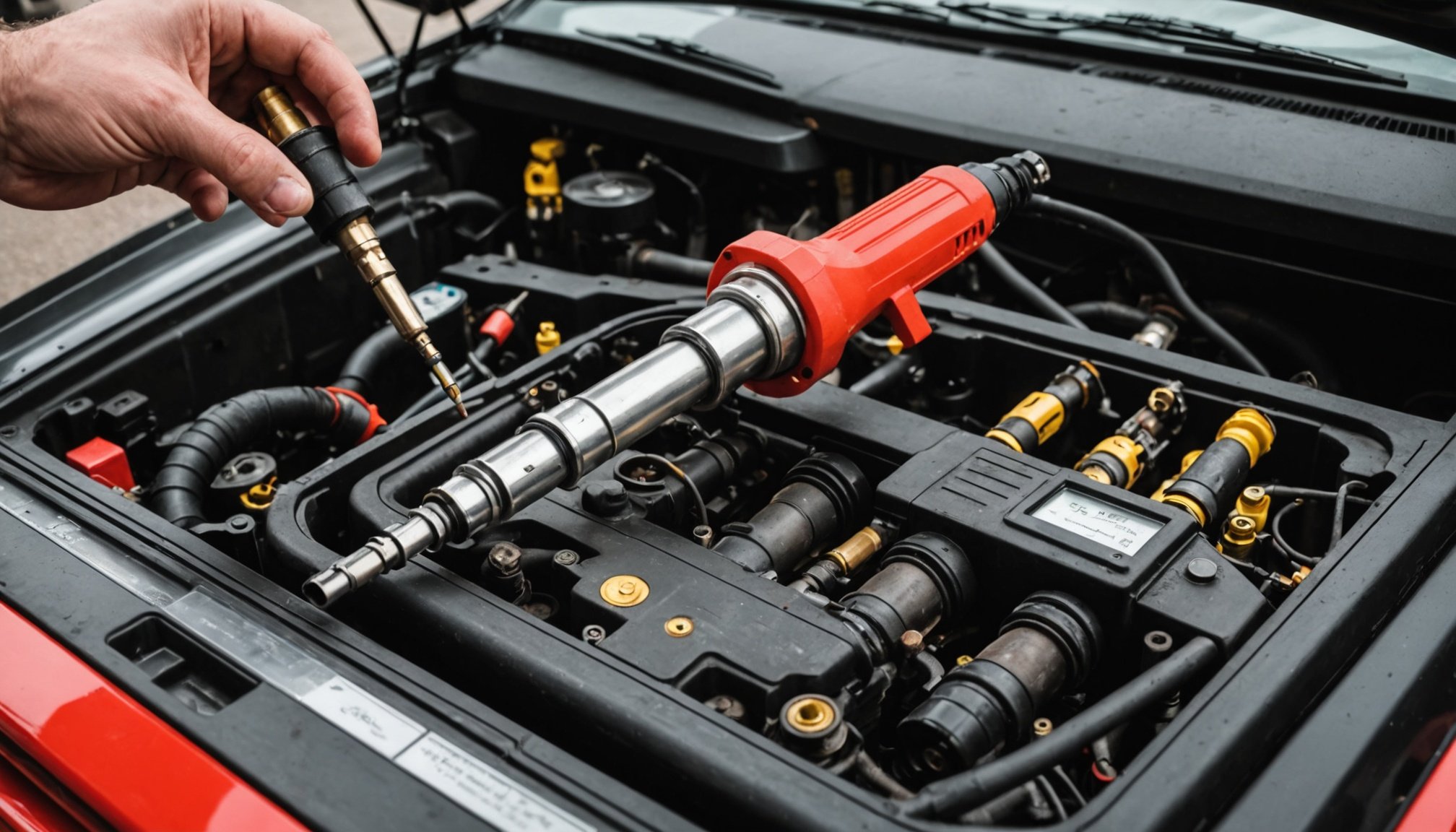In the world of car maintenance, the fuel injector is a critical component in the efficient functioning of your vehicle. Yet, understanding its role and knowing how to test and replace it using home tools can often seem daunting. However, with the right guidance, you can accomplish this task easily and efficiently. This article aims to provide clear and comprehensive instructions on how to test and replace a fuel injector in a UK car using tools readily available at home.
Identifying the Need for Fuel Injector Testing
Before diving into the process of testing and replacing a fuel injector, it’s essential to understand why this task might be necessary. A fuel injector plays a significant role in your car’s engine by delivering fuel into the combustion chamber. If it fails, your car’s performance will suffer.
Also to see : What are the key considerations when selecting a child car seat for a compact car in the UK?
Signs that your fuel injector may be faulty include inconsistent engine power, poor fuel economy, and an engine that misfires or doesn’t start. If you notice any of these issues, it’s time to test your fuel injector.
Testing the Fuel Injector
Testing a fuel injector is a relatively straightforward process that you can perform with some basic home tools. However, it’s worth noting that safety should always be your primary concern when working with car engines. Ensure you’re wearing safety glasses and gloves, and that your working area is clear and well ventilated.
Have you seen this : What are the essential maintenance tips for keeping a classic UK sports car in optimal condition?
To test your fuel injector, you’ll need a multimeter and a noid light, both of which are inexpensive and readily available at most hardware stores.
- Disconnect the fuel injector you wish to test from the harness.
- Set your multimeter to the Ohms resistance setting.
- Connect the multimeter leads to the fuel injector terminals.
- Record the reading on the multimeter.
Typically, a good fuel injector should have a resistance of 12 to 16 ohms. If the reading is outside this range, it’s likely that the fuel injector is faulty.
To additionally confirm the condition of your fuel injector, you can test it with a noid light. Disconnect the fuel injector from the harness and connect the noid light in its place. Turn on your vehicle’s ignition without starting the engine. If the noid light flashes, it means the electrical circuit to the fuel injector is working correctly. If it doesn’t flash, you may have an electrical issue.
Purchasing the Right Replacement
Once you’ve confirmed that your fuel injector is indeed faulty, the next step is to purchase a suitable replacement. It’s crucial to buy a fuel injector that matches your car’s make and model. The best place to find this information is in your vehicle’s owner’s manual.
When looking for replacements, consider trusted automotive parts retailers, either online or in physical stores. Make sure to compare prices across different sellers to ensure you’re getting the best deal.
Replacing the Fuel Injector
After acquiring the right replacement, it’s time to install it. Here are the steps to follow:
-
Disconnect the battery: Always disconnect the car battery before starting any replacement work to avoid any accidental shorts or shocks.
-
Remove the fuel injector: Detach the fuel rail that holds the injector in place. Take note of how the injector is positioned for an easy reinstallation process. Carefully remove the injector to avoid damaging the surrounding parts.
-
Install the new injector: Apply a small amount of engine oil to the O-rings on the new injector to make it easier to install. Position the new injector the same way the old one was positioned and gently push it into place.
-
Reconnect the fuel rail: Once the new injector is in place, reattach the fuel rail. Make sure it’s tightly secured to avoid any fuel leaks.
-
Connect the battery: Finally, reconnect the car battery and start the engine. Listen for any irregular sounds and watch for any leaks. If everything seems to be in order, take the car for a short drive to ensure it’s running smoothly.
Ensuring Proper Maintenance
After successfully replacing your fuel injector, regular maintenance is key to prolonging its lifespan and ensuring optimal performance. Regularly check your fuel system for any leaks or irregularities. Use quality fuel, and consider adding a fuel injector cleaner to your fuel tank every couple of months to keep your fuel system clean.
Remember, with the right knowledge and tools, you can confidently take on tasks like testing and replacing a fuel injector. Doing so not only saves you money but also gives you a better understanding of your vehicle.
Diagnosing Common Fuel Injector Problems
It’s a good idea to familiarise yourself with common fuel injector problems, so you can diagnose and fix issues quickly. One common fuel injector problem is clogging. Clogging occurs when debris or deposits build up in the fuel injector, restricting the flow of fuel. This can lead to decreased engine performance and poor fuel economy. Regular use of a fuel injector cleaner can help prevent this issue.
Another common problem is a leaking fuel injector. This can be caused by faulty O-rings or a cracked injector body. A leaking fuel injector can lead to a variety of issues, including a strong fuel smell, poor engine performance, and even a fire risk. If you suspect a leak, it’s important to address it immediately to prevent further damage.
Faulty electrical connections can also cause issues with your fuel injector. If your car’s engine is misfiring or if you notice a decrease in fuel efficiency, it could be due to a faulty electrical connection. To diagnose this issue, you can use a noid light, as described in the testing section above.
Being aware of these common fuel injector problems can help you quickly identify and address any issues, ensuring your car remains in good working order.
Conclusion: The Importance of Regular Maintenance and Proactive Measures
Regular maintenance and the ability to quickly diagnose and address issues with your fuel injector can significantly improve your car’s performance, fuel economy, and longevity. With the right knowledge and a few basic home tools, you can effectively test and replace a fuel injector in a UK car.
Remember, the key to a healthy fuel injector is proactive maintenance. Use quality fuel, keep your fuel system clean with regular use of a fuel injector cleaner, and address any issues immediately to prevent further damage.
Understanding your vehicle and its components not only ensures you’re prepared in case of a mechanical problem, but it also empowers you to take control of your car’s health. This not only saves you money but also enriches your overall driving experience.
In conclusion, with the right tools and knowledge at your disposal, testing and replacing a fuel injector doesn’t have to be a daunting task. So, time to roll up your sleeves and tune up your car for some smooth and efficient rides!












